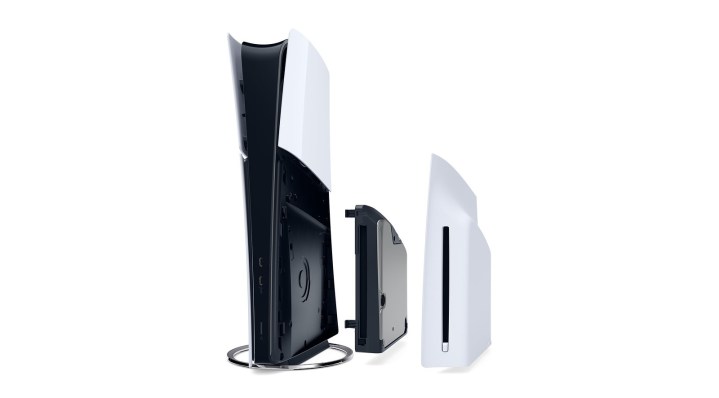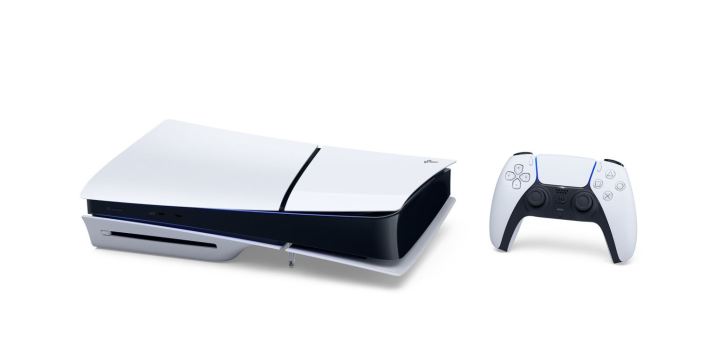When Sony revealed updated models for the PS5 and PS5 Digital Edition, one specific accessory for the latter caught my eye. That would be the Ultra HD Blu-ray Disc Drive for PS5, which players can purchase separately and then attach to the Digital Edition console if they decide they do want to own physical media after all. Coming right in the middle of a console generation where multiple versions of each Sony and Microsoft console exist, it hews a lot closer to a console future that draws from the PC experience.

By that, I mean game consoles are becoming more modular and customizable. Something like the Ultra HD Blu-ray Disc Drive points toward a future where you can swap console parts in and out as you would with a gaming PC. This not only gives companies a chance to be more digitally focused while still supporting physical media but potentially makes it easier to expand a console’s memory or power without doing a full-on mid-gen console refresh. It’s unknown if this is the real future for console gaming, but the new PS5 models at least lay a bit of groundwork.
A more modular future
While “slim” versions of consoles have been an industry trend for a while, the significance of mid-gen console refreshes has grown over the past decade. The PS4 improved with the PS4 Slim and then the PS4 Pro, while Microsoft flooded the Xbox One market with the One S, One S All-Digital Edition, and One X updated version of the console. And while the long-rumored Nintendo Switch Pro never came to fruition, the Switch still saw hardware variations with the Nintendo Switch Lite and Nintendo Switch OLED model. It’s also already possible to tinker with your PS5 a bit and expand its storage capabilities, something that typically felt relegated to modded consoles in previous generations.
This more frequent and incremental hardware release cadence reflects other parts of the tech industry and allows these companies to test new ideas for hardware going forward. The Xbox One S All-Digital Edition played a role in paving the way for the digital-only Xbox Series S. As such, it wouldn’t surprise me if Sony is experimenting with a new hardware approach with these updated PS5 models, even if they aren’t massive technical overhauls.

The most notable changes come with the new PS5 Digital Edition, which features slightly more storage space than its predecessor and lets people swap one of its four faceplates for the Ultra HD Blu-ray Disc Drive that plays physical media. Typically, customization on PS5 was limited to console covers. Now, instead of making console modifications something relegated to the hardcore gamer willing to take apart the console to expand storage, Sony is offering an optional upgrade that changes a core aspect of the hardware initially purchased. Something like an added disc drive is more common in the PC space but a rarer occurrence on consoles.
As such, it feels like Sony is testing something significant with this updated version of the PS5 Digital Edition. If successful, it could demonstrate that people are okay with more modular and upgradeable consoles. Niko Partners’ Director of Research and Insights Daniel Ahmad reflected this sentiment on X, explaining how Sony could use these updated consoles to test ideas for future platforms.
“The new digital version, with the option to buy and attach a disc drive, might encourage additional sales due to that psychological factor, even with the $50 price increase,” Ahmad writes. “That being said, I believe this is more indicative of Sony’s current thinking around its approach for next-gen. If the new digital edition does gain traction and we see a continued trajectory of increased digital software sell-through, then I wouldn’t be surprised if Sony makes digital + disc drive add-on the default option for next-gen.”
To Ahmad’s final point, this disc drive add-on could be the future for flagship gaming hardware. The gaming industry is skewing more digital-focused, with mid-gen refreshes like the leaked Brooklin concept from Xbox not having a disc drive at all. That’s disappointing for fans of preservation and physical. Still, this more modular approach to console design could allow console manufacturers to support physical media without making it necessary on every console in the future.

In turn, that begs an important question: If the disc drive on a system is optional and can be swapped in and out, what else on the system is modular? Sony could use this approach to forgo mid-gen console refreshes with its next console, instead letting players swap out individual pieces to improve it like they would with a PC. That feels reminiscent of 1900s console add-ons like the Sega CD and 32X. Of course, Sony has not announced its intent to do any of this, but this subtle change to the PS5 Digital Edition could have some important repercussions on gaming hardware as a whole.
The downside to this design approach is that the cost of upkeeping hardware gets more expensive the more modular its design is. Look at how expensive new hardware for PCs can get, or even just that getting a new PS5 Digital Edition and an Ultra HD Blu-ray Disc Drive will be about $30 more expensive than just buying the new standard PS5 model that already comes with a disc drive. Even the Vertical Stand is now a costly add-on rather than being packed with the console.
Part of the beauty of console gaming is its simplicity, and a more malleable design can complicate things. Still, a future where game consoles are designed as customizable as PCs could give console players more options in adapting their gaming experience to their personal preferences. For now, though, the choices will just be whether we want to add a disc drive or vertical stand to our PS5 Digital Edition.



